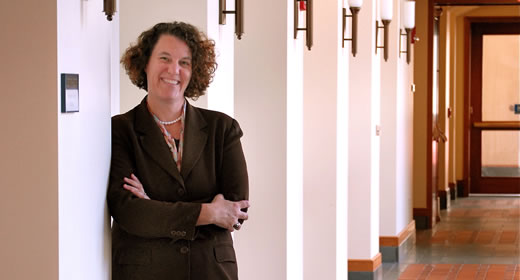
Susan Dynarski, writing for The New York Times, explains “Why American schools are even more unequal than we thought.” In the piece, Dynarski describes a new measure of economic hardship—one that reveals an even more troubling picture of the achievement gap between America’s richest and poorest children.
Policymakers and practitioners generally use eligibility for subsidized school meals to indicate economic disadvantage, Dynarski explains, but nearly half of all American students are eligible for free or reduced-price meals. With postdoctoral fellow Katherine Michelmore, Dynarski found that looking at a single year of subsidized meal eligibility “substantially understate[d] the achievement gap.”
“In Michigan, as in the rest of the country, about half of eighth graders in public schools receive a free or reduced-price lunch. But when we look more closely, we see that just 14 percent have been eligible for subsidized meals every year since kindergarten,” Dynarski writes. “These children are the poorest of the poor—the persistently disadvantaged.”
Using longitudinal data on subsidized meal eligibility collected by the Michigan Consortium for Educational Research, Dynarski found that “[t]he achievement gap between persistently disadvantaged children and those who were never disadvantaged is about a third larger than the gap that is typically measured.”
“No one ever actively decided that eligibility for subsidized meals was the best way to measure students’ economic disadvantage. The metric was widely available and became by default the standard way to distinguish between poorer and richer children,” Dynarski writes. “But it was always an imprecise measure, and we can do better at little cost.”
“Many federal, state and local programs distribute money based on the share of a district’s students who are eligible for subsidized meals. But schools that have identical shares of students eligible for subsidized meals may differ vastly in the share of students who are deeply poor,” writes Dynarski. “The schools with the most disadvantaged children have greater challenges and arguably need more resources.”
Susan Dynarski is a professor of public policy, education, and economics at the University of Michigan. She is co-founder and co-director of the Ford School’s Education Policy Initiative, which engages in applied, policy-relevant research designed to improve educational achievement and outcomes. Katherine Michelmore is a postdoctoral fellow with the Ford School's Education Policy Initiative. Her current research interests focus on the interactions between public policies and family structure, family demography, and access to higher education.
More news from the Ford School